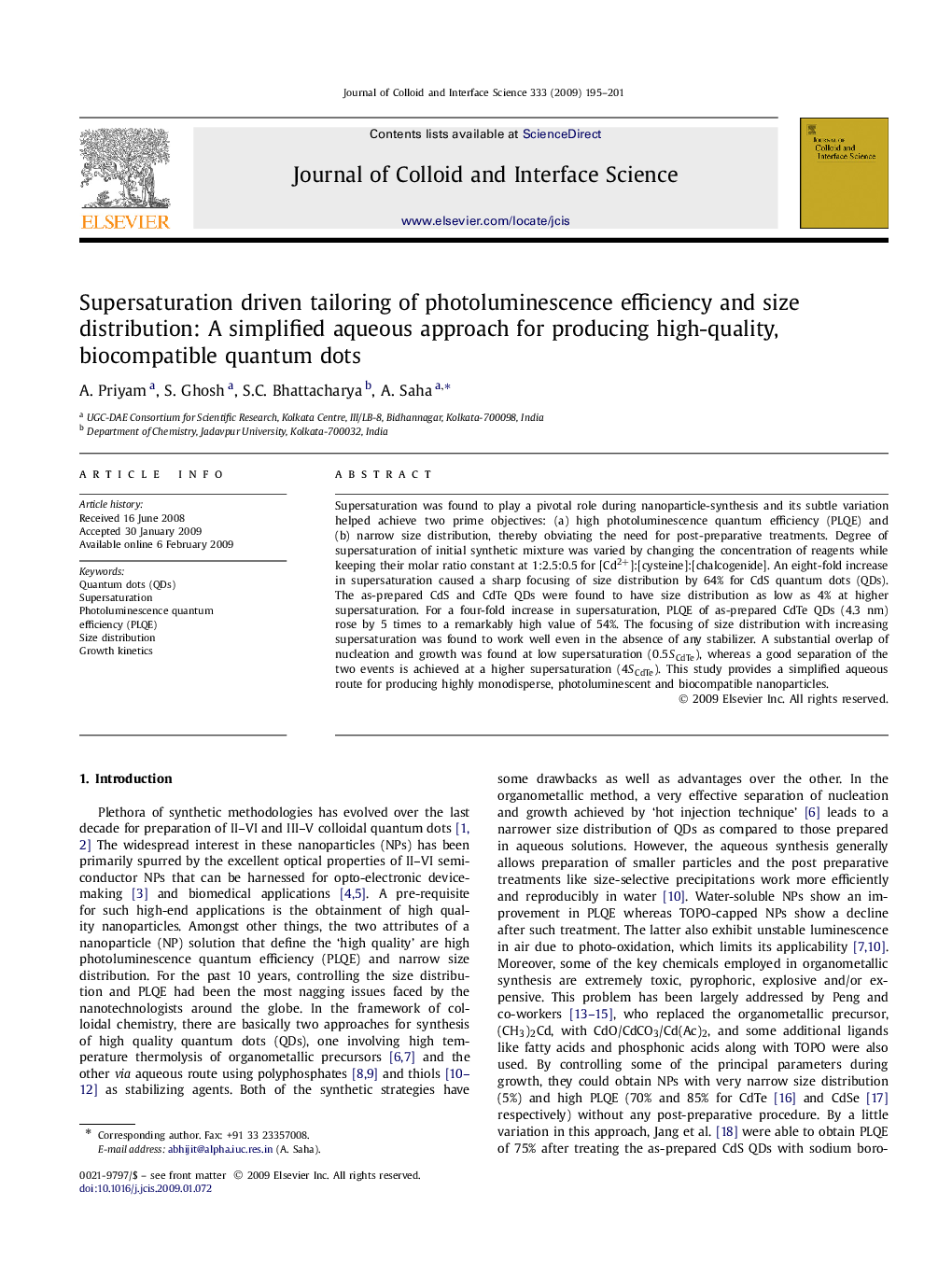| کد مقاله | کد نشریه | سال انتشار | مقاله انگلیسی | نسخه تمام متن |
|---|---|---|---|---|
| 610965 | 880663 | 2009 | 7 صفحه PDF | دانلود رایگان |

Supersaturation was found to play a pivotal role during nanoparticle-synthesis and its subtle variation helped achieve two prime objectives: (a) high photoluminescence quantum efficiency (PLQE) and (b) narrow size distribution, thereby obviating the need for post-preparative treatments. Degree of supersaturation of initial synthetic mixture was varied by changing the concentration of reagents while keeping their molar ratio constant at 1:2.5:0.5 for [Cd2+]:[cysteine]:[chalcogenide]. An eight-fold increase in supersaturation caused a sharp focusing of size distribution by 64% for CdS quantum dots (QDs). The as-prepared CdS and CdTe QDs were found to have size distribution as low as 4% at higher supersaturation. For a four-fold increase in supersaturation, PLQE of as-prepared CdTe QDs (4.3 nm) rose by 5 times to a remarkably high value of 54%. The focusing of size distribution with increasing supersaturation was found to work well even in the absence of any stabilizer. A substantial overlap of nucleation and growth was found at low supersaturation (0.5SCdTe0.5SCdTe), whereas a good separation of the two events is achieved at a higher supersaturation (4SCdTe4SCdTe). This study provides a simplified aqueous route for producing highly monodisperse, photoluminescent and biocompatible nanoparticles.
Degree of supersaturation has been found to be an effective tool to achieve two prime objectives of nanoparticle synthesis: (1) high photoluminescence quantum efficiency (PLQE) and (2) narrow size distribution.Figure optionsDownload as PowerPoint slide
Journal: Journal of Colloid and Interface Science - Volume 333, Issue 1, 1 May 2009, Pages 195–201